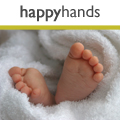3 - 5yrs Clinic
First Aid
Preventing and treating poisining with First Aid For Life
A poison is any substance (a solid, liquid, or a gas) which can cause damage if it enters the body in sufficient quantities. A poison can be swallowed, breathed in, absorbed through the skin or injected.
Some poisons cause an all over reaction: and can result in seizures, blurred vision, acute anaphylaxis and can be fatal – be cautious and always get the child quickly seen by a medical professional
If you suspect that a child has taken a harmful substance. Call an ambulance and explain clearly what has happened. They will advise you what to do.
Prevention
The Childhood Accident Prevention Trust www.capt.org.uk and Royal Society for the Prevention of Accidents www.rospa.com both work to prevent accidents in children and their websites are full of really useful tips and advice.
Keep all potentially harmful substances out of reach of small children and ideally in a locked cupboard. This includes; dishwasher tablets, medicines, alcohol, cosmetics, DIY, cleaning and gardening products
Ensure that Grandparents, Child Carers and visitors are also mindful about leaving potentially hazardous substances within reach - the contents of many hand bags could be fascinating and lethal to a small child!
- Never decant medication or other products into different containers, always use the original containers, clearly labelled, with childproof lids if possible.
- Keep batteries out of reach of small children and ensure that batteries in their toys are firmly secured.
- Fit carbon monoxide alarms and have appliances and alarms regularly checked.
- Be aware of harmful plants – many decorative plants (particularly berry bearing Christmas plants) are toxic. Plants can be checked through the Royal Horticultural Society www.rhs.org.uk or by asking your local florist or horticultural nursery.
Poisoning from an ingested (swallowed) substance
You may find the child occupied with something potentially dangerous and be unsure if they have taken anything - ALWAYS GET THEM CHECKED!
Depending what they have taken they may have a burning sensation of their lips and mouth, nausea or vomiting, drowsiness or hyper-manic and possibly a change in their heartbeat.
If a child has swallowed a non-corrosive substance (a product that will not burn them) and if the child is completely well:
- keep them still, as moving around will increase their metabolism and speed up the poison circulating around their body.
- Try not to be cross with them as they will not tell you what they have taken if they are scared.
- If they are fine, phone NHS Direct or the ambulance service and get advice from them.
- If the child becomes unconscious – open the airway and check for breathing. Be ready to resuscitate if necessary - use a protective face shield to ensure you don’t put yourself at risk from whatever they have taken.
Tip: If a child has swallowed a berry from a plant, take a photo of the plant and a leaf as well, both of these will help the medical team to identify the berry and establish whether it is harmful or not.
If the child has swallowed a corrosive or burning substance remain as calm as possible. Encourage them to sip small sips of milk or water. If a child was to mistake a dishwasher or washing machine capsule or tablet for a sweet it could prove fatal - cleaning products are extremely alkaline and can burn the skin or throat.
If a child has accidently drunk some paint stripper or strong cleaning product:
- Remove it and rinse the product away as quickly as you can. Protect yourself if possible, but attend to them fast.
If they have swallowed some of the product:
- Ideally get them to swill milk or water around their mouth and spit it out and then give them small sips of milk or water to dilute the product down their throat.
DO NOT MAKE THEM SICK as this will cause them to burn again as the corrosive product comes back up.
- Phone for an ambulance and keep giving them small sips of milk or water.
Look at the box that the substance has come from and read the advice in case of accidental ingestion. If they have swallowed some of the product it is possible that it will have burnt both their oesophagus and their airway and this can lead to their airway swelling and becoming obstructed so that they are unable to breathe.
If this happens and they go unconscious and stop breathing you will need to resuscitate them by giving them breaths followed by chest compressions. It is important that you protect yourself when giving the breaths. This can be done with a pocket mask or plastic bag with a hole in it. Cover the mouth with the bag and breath through the hole in the bag into the nose - thereby protecting yourself and ensuring that you are not burnt as well.
If someone has lost consciousness and stopped breathing after eating something corrosive protect yourself if doing mouth to mouth resuscitation. When you go to hospital take the packaging and the remains of anything you think they have swallowed as this will help the doctors to treat them in the best way possible.
Inhalation of fumes
Take them away from the smoke and encourage them to breathe fresh air if possible.
- Check consciousness, airway and breathing and be prepared to resuscitate if necessary.
Burns to the airway need to be treated as an urgent medical emergency - call an ambulance. They may have difficulty breathing, be slightly blue around the lips, have soot around their mouth and could have a hoarse voice and painful throat. If fully conscious sitting them upright to help their breathing and giving them small sips of cool water is helpful. Do not leave them and continually reassess them to check they are not losing consciousness.
For chemical burns on the skin: run under cool running water for at least 20 minutes and be careful of the run off as it could still be corrosive and hurt you. Look at the advice on the packaging and see if there are any specific instructions.
If there is a poison absorbed through the skin it may cause a rash, itching or pain, redness, blistering or burning.
 First Aid for life provides this information for guidance and it is not in any way a substitute for medical advice. First Aid for Life is not responsible or liable for any diagnosis made, or actions taken based on this information. It is strongly advised that you attend a practical First Aid course to understand what to do in a medical emergency.
First Aid for life provides this information for guidance and it is not in any way a substitute for medical advice. First Aid for Life is not responsible or liable for any diagnosis made, or actions taken based on this information. It is strongly advised that you attend a practical First Aid course to understand what to do in a medical emergency.
For more information please visit www.firstaidforlife.org.uk
Related Articles
Nurseries: learning through fun
What is the Early Years Foundation Stage?
Koko Kids: a new design boutique
First Aid courses from an award winning London based company
First aid training that could help save a life
Greycoat Lumleys' Emergency nanny lifeline
A bright Montessori future in Brooke Green
Related Products
East Coast, Wooden Combination Highchair
Baroo, cotbed duvet and pillow set
Have Your Say
Be the first person to comment on this article, just post a comment below.






In order to post a comment you need to be a member. Join Now | Sign in